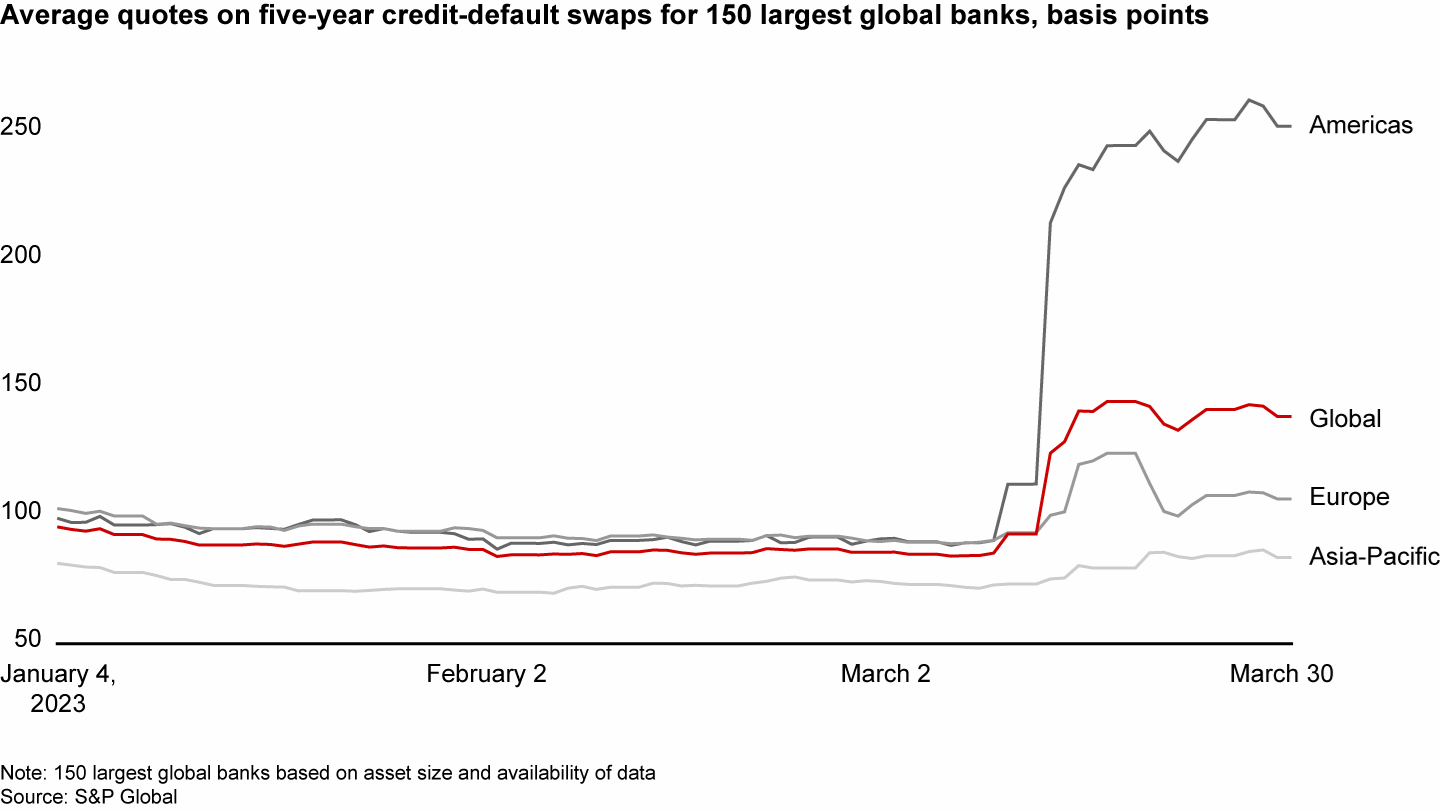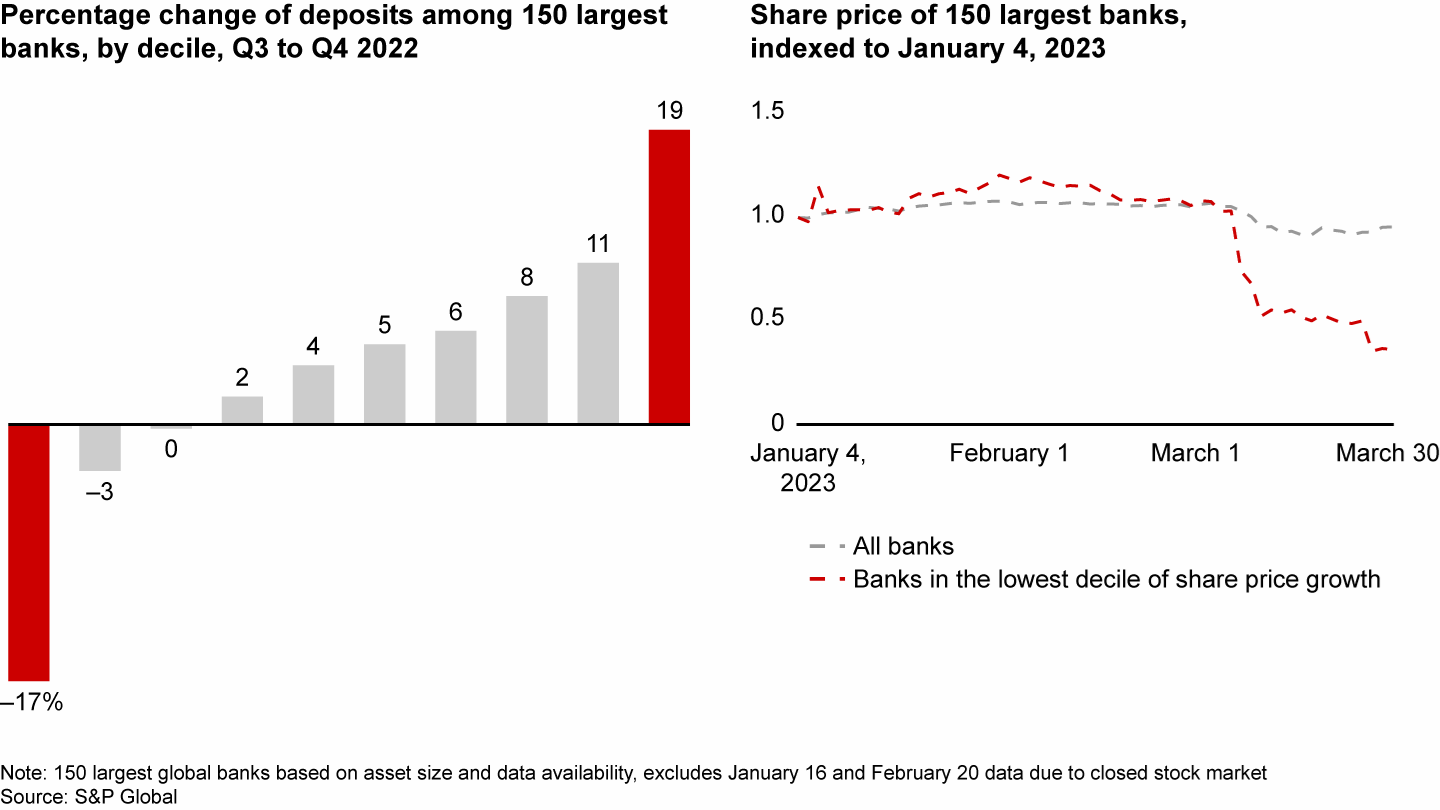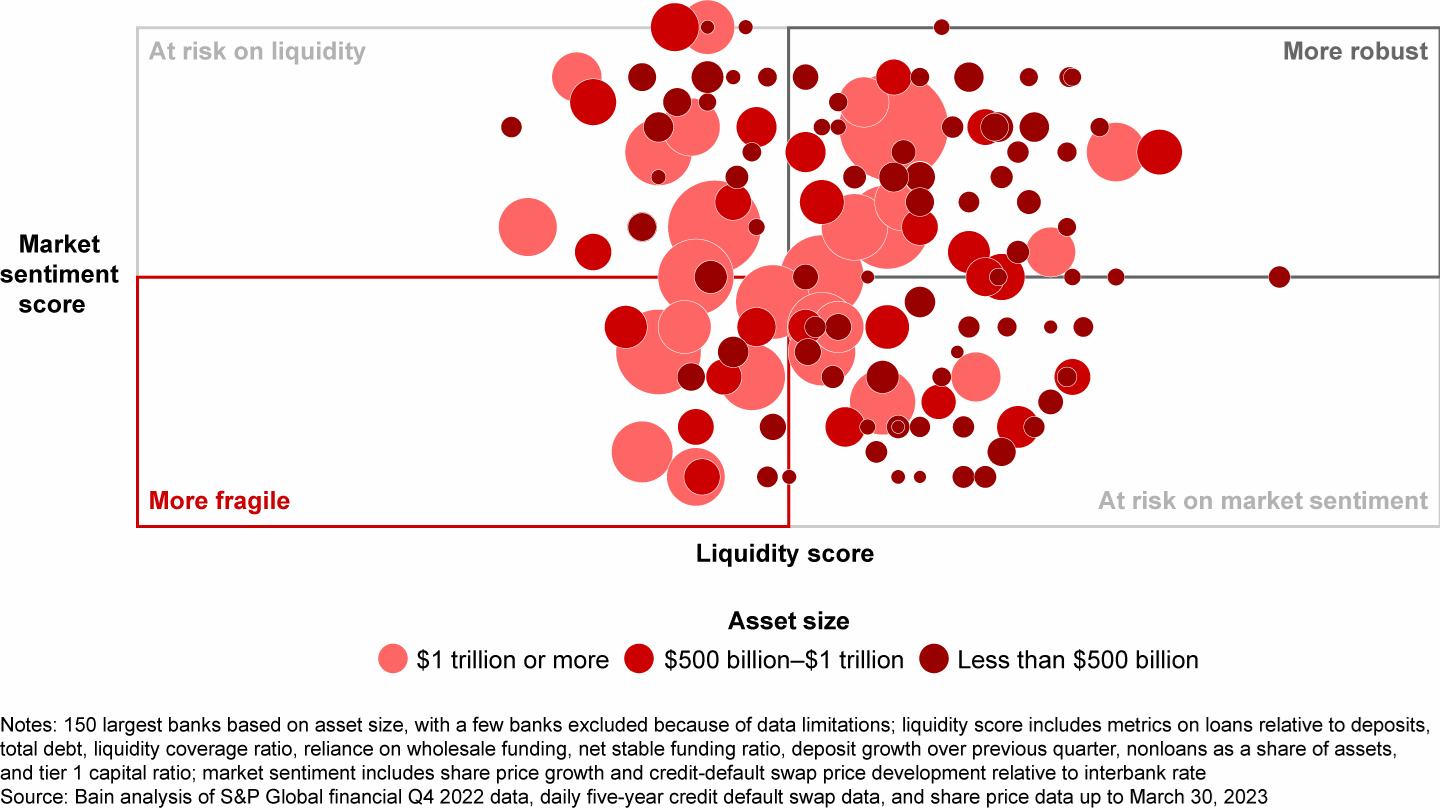Brief

How resilient are banks after the recent carnage?
The deposit runs that led to the collapse of Silicon Valley Bank, Signature Bank, and Credit Suisse put many bank investors and customers on edge. Shares of the 150 largest banks globally tumbled in March, with the steepest drops in the Americas and Europe. Credit-default swaps (CDS)—the cost to insure the banks’ bonds—rose 45% since the start of the year, soaring 150% in the Americas (see Figure 1).
Rising quotes for credit-default swaps reflect investors’ anxiety about the banking sector, especially in the Americas


For the moment, the banking sector doesn’t have a structural problem. Since the 2008 financial crisis, regulators have tightened monitoring and raised the amount of capital banks must hold, in order to reduce the chances of insolvency. Banks thus have a bit more skin in the game. Equity buffers have increased substantially, and profitability is running at or above the 10-year average, depending on the region.
Moreover, regulators and governments have committed to taking steps to ensure that the banking system remains sound. They’ve pledged emergency support and available funding to assure all depositors, even those above insurance limits.
However, many customers and investors remain skeptical of some banks’ prospects. Among the large banks, the decile with the worst deposit performance saw deposits fall 17% from the third to fourth quarters of 2022 (the latest data available), mainly among US banks. US deposits as a whole peaked in April last year, and outflows grew to a flood in March 2023, with about $312 billion leaving the banking system. The lowest-decile banks also suffered steep drops in share price amid a surge in trading (see Figure 2).
Customers and investors have pursued a flight to quality


Meanwhile, a small group of banks have benefited from the same development, indicating a flight to quality: Deposits grew 19% for the top decile of the large banks during the same period. And a few banks have already made strategic acquisitions in the first quarter of this year, such as UBS buying Credit Suisse and Flagstar buying Signature.
Indeed, markets are punishing some banks that might not have structural problems, but have other issues, even past issues that may imply continued poor management. Markets are rewarding other banks with perceived strong management.

Banking Liquidity: Is The Talk of Crisis Fair?
Listen to Episode 11 of Deciphered as experts dive into the current climate of fiscal stimulus, loose monetary policy, and banks’ handling of excess liquidity and attempt to answer the question: Is the talk of a banking crisis fair?
A nuanced assessment of bank health
To gauge the effect of these factors on the largest banks, Bain & Company analyzed their health along two dimensions, liquidity and market sentiment, sorting them into four positions (see Figure 3):
We use liquidity and market sentiment to assess the health of individual banks


- More robust. These 53 banks have a strong balance sheet, rising deposits, a low reliance on wholesale funding, and stable prices for their shares and CDS. The group consists mainly of multinational banks and specialized firms with a superior position in their niches.
The current situation favors such banks. They can use their relative strength to grow, building a war chest for expansion in certain countries or business lines, or to acquire other companies. - At risk on liquidity or market sentiment. The 27 banks in the upper-left quadrant have limited liquid assets relative to the other banks, but investors may appreciate other elements of the business and hence haven’t penalized this group.
Conversely, 38 banks in the lower-right quadrant have a better liquidity score but a worsening perception in the market for other reasons. That market scrutiny could cause a further deposit withdrawal, which could exacerbate liquidity challenges.
Banks with liquidity issues should revise their funding strategy, defending their deposit base and investing in liquidity measurement. Those at risk with investors should improve their communications to influence market sentiment. Each group should enhance compliance and risk controls, focus on generating capital, and emphasize conservative management through such steps as optimizing risk-weighted assets.
- More fragile. The 16 banks suffering from both poor liquidity and market scrutiny bear the greatest risks. They have dwindling deposits, lower tier 1 capital ratios, and decreasing share or increasing CDS prices. This group consists primarily of underperforming regional banks, firms with limited funding sources or concentrated asset exposures, and slow-moving major banks.
Remedies for these banks may be painful, but they’re critical for the institutions to survive, more so to thrive. Banks under stress need to prepare for a deposit war and draw up a recovery plan that includes alternative funding options. Investor and regulator communications need to intensify, focusing on measures to increase resilience. These banks should also face realities by mapping out emergency options to merge or be acquired.
The scores shown here represent a point in time—the end of 2022 for liquidity, asset, and capital measures, and the end of March for market sentiment. We expect that the entire industry is now shifting slightly to the left, with worsening liquidity measures. Investors currently give outsize weight to liquidity, given the speed of recent deposit outflows. So a bank that stumbles in communicating about liquidity could see its shares plummet. In turn, that could lead to a run on deposits.
For vulnerable banks, then, the period for shoring up liquidity and improving market perceptions may be short. Likewise, this period offers healthy banks unique opportunities to accelerate their growth.